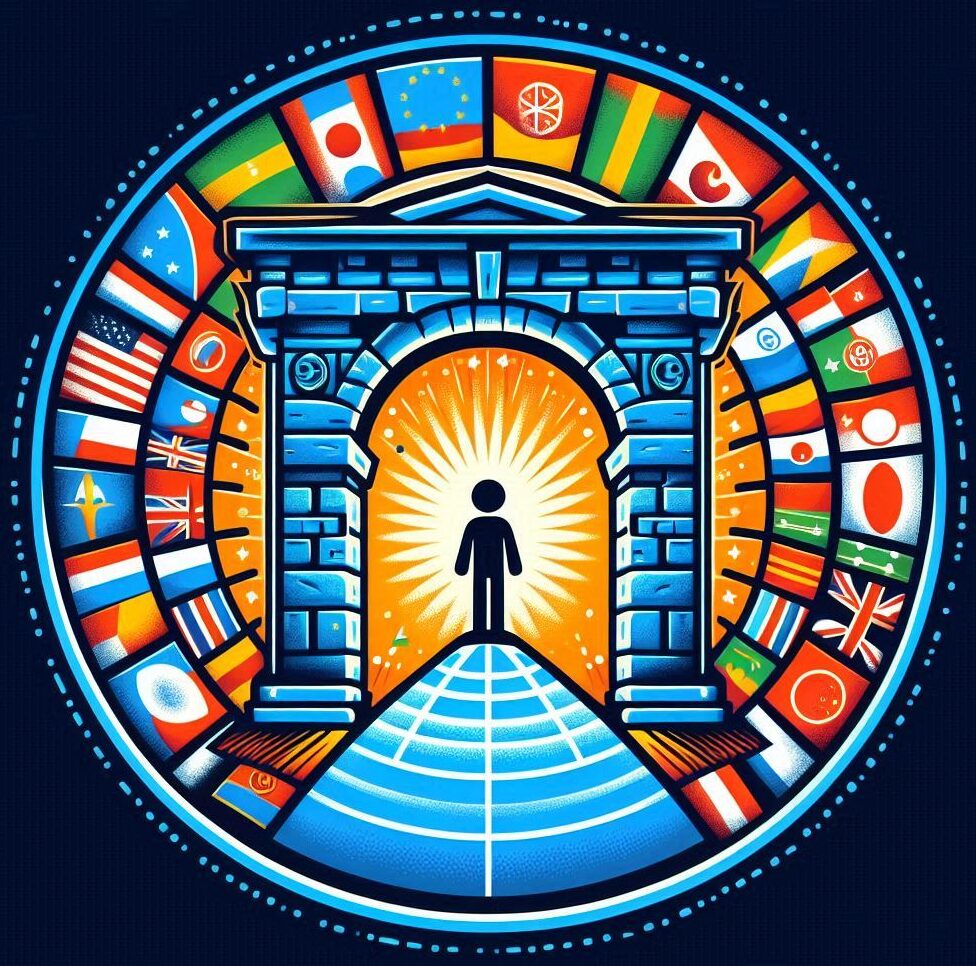
Language is one of the most essential and fascinating aspects of human culture. It is the primary vehicle for communication, culture, and identity, with thousands of languages spoken across the globe today. Understanding how these languages relate to one another offers valuable insight into the history, culture, and migration of human civilizations. This is where the language tree model becomes an important tool. The language tree represents how different languages are grouped into families based on their shared roots, helping us visualize and analyze the relationships among languages.
In this article, we will explore the concept of the language tree, examine the major language families that make up its branches, and identify which languages are spoken in different countries.
1)Understanding the Language Tree Model
The language tree is a metaphorical representation of how languages evolve and diversify over time. Much like a biological tree with roots, branches, and leaves, the language tree has a trunk representing the earliest common ancestors of human languages. From this trunk, branches represent different language families, and sub-branches represent languages that share common linguistic traits.
Languages evolve similarly to how species evolve. Over time, populations of speakers of a single language become isolated from one another, and these groups develop their own unique linguistic features. When these changes accumulate, the language may become so distinct that it is classified as a different language. The language tree is used to map this evolution, illustrating the divergence of languages from a common source.
At the base of the tree are the most ancient languages, which over millennia have evolved into new families. These families contain groups of languages that share common linguistic ancestry. Each language family is a branch with numerous sub-branches, and the tree captures their geographical spread and historical development.
Now, let’s explore the major language families in the world and identify which countries speak the languages that belong to these families.
2)The Indo-European Language Family
Overview
One of the most widely spoken language families in the world is the Indo-European family, which stretches across Europe, the Americas, and large parts of Asia. This family is believed to have originated from a group of languages spoken around 4000-5000 years ago, possibly in the steppes north of the Black Sea, and has since spread to cover a massive portion of the globe.
Sub-families and Languages
The Indo-European family includes several major sub-families:
- Germanic Languages: This sub-family includes English, German, Dutch, Swedish, Danish, and Norwegian, among others. These languages are spoken across much of Northern and Western Europe, as well as in the United States, Canada, Australia, and New Zealand due to historical colonization.
- Romance Languages: The Romance languages descend from Latin, the language of the Roman Empire. This group includes Spanish, Portuguese, French, Italian, and Romanian. Spanish is spoken in Spain, much of Latin America, and parts of the U.S., while Portuguese dominates in Portugal and Brazil. French is widely spoken in France, parts of Belgium, Switzerland, and many African countries.
- Slavic Languages: This sub-family includes Russian, Polish, Czech, Slovak, Bulgarian, Serbian, and Croatian, among others. These languages are spoken across Eastern Europe and parts of Central Europe. Russian is also an important language across much of the former Soviet Union.
- Indo-Iranian Languages: The Indo-Iranian branch includes languages like Hindi, Bengali, Punjabi, and Urdu, spoken primarily in India, Pakistan, and Bangladesh, as well as Persian (Farsi) spoken in Iran. Pashto and Kurdish are also members of this branch, spoken in Afghanistan and parts of Iraq and Turkey.
- Celtic Languages: Once widespread throughout Europe, Celtic languages are now largely confined to the British Isles. Modern Celtic languages include Irish, Scottish Gaelic, and Welsh, spoken in Ireland, Scotland, and Wales, respectively.
- Greek and Albanian: These two languages form individual branches of the Indo-European family. Greek is spoken primarily in Greece and Cyprus, while Albanian is the official language of Albania and Kosovo.
Global Spread
Through colonization, trade, and migration, Indo-European languages are now spoken in nearly every continent. English, for instance, is the most widely learned second language globally, making this family hugely influential in global communication and commerce.
3)The Sino-Tibetan Language Family
Overview
The Sino-Tibetan family is the second-largest language family in terms of the number of speakers, primarily due to the dominance of Chinese languages. The family includes over 400 languages spoken by more than 1.5 billion people across East Asia, Southeast Asia, and parts of South Asia.
Sub-families and Languages
- Sinitic Languages: This is the most prominent branch of the Sino-Tibetan family, with Mandarin Chinese being the most widely spoken language in the world, spoken by over a billion people in China, Taiwan, and Singapore. Other Chinese dialects in this branch include Cantonese, Shanghainese, and Hakka, spoken in various regions of China and by overseas Chinese communities.
- Tibeto-Burman Languages: This branch includes languages like Tibetan, spoken in Tibet, and Burmese, the official language of Myanmar. Other Tibeto-Burman languages are spoken across Nepal, Bhutan, northeastern India, and parts of Southeast Asia.
Global Spread
Sino-Tibetan languages are predominantly spoken in Asia, with Mandarin being the largest and most influential. Due to China’s growing global presence, Mandarin is becoming increasingly important as a second language in international business and diplomacy.
4)The Niger-Congo Language Family
Overview
The Niger-Congo family is the largest language family in terms of the number of distinct languages, with over 1,500 languages spoken across sub-Saharan Africa. These languages are spoken by more than 600 million people and form the core of linguistic diversity in Africa.
Sub-families and Languages
- Bantu Languages: The Bantu sub-family is a major branch of the Niger-Congo family, with languages like Swahili, Zulu, Shona, and Xhosa. Swahili serves as a lingua franca in East Africa, spoken in Tanzania, Kenya, Uganda, and parts of the Democratic Republic of the Congo. Zulu and Xhosa are widely spoken in South Africa.
- Volta-Congo Languages: This branch includes languages like Yoruba and Igbo, spoken in Nigeria, and Akan, spoken in Ghana. These languages are prominent in West Africa and play important roles in local communication and culture.
- Gur and Atlantic Languages: Spoken primarily in West Africa, the Gur sub-family includes languages like Mossi (Burkina Faso) and Dagbani (Ghana), while Atlantic languages include Wolof, spoken in Senegal.
Global Spread
While Niger-Congo languages are primarily confined to Africa, their influence has spread through the African diaspora, especially in the Americas, where languages like Yoruba and Kongo have influenced the development of Creole languages in regions such as Haiti and Cuba.
5)Other Major Language Families
Afro-Asiatic Language Family
The Afro-Asiatic family includes languages spoken across North Africa, the Horn of Africa, and parts of the Middle East. The most widely spoken languages in this family include Arabic, spoken across the Arab world, from Morocco to Iraq, and Hebrew, the official language of Israel. Other significant Afro-Asiatic languages include Amharic (Ethiopia) and Somali (Somalia).
Altaic Language Family (Controversial)
Though debated by linguists, the Altaic family has been proposed to include languages like Turkish, Mongolic, and Tungusic. These languages are spoken across Central Asia, including Turkey, Mongolia, and parts of Russia. However, the grouping of these languages into a single family remains controversial, with some linguists arguing that they are not as closely related as previously thought.
Dravidian Language Family
The Dravidian family is primarily spoken in southern India and parts of Sri Lanka. Major Dravidian languages include Tamil, Telugu, Kannada, and Malayalam. These languages are ancient and have rich literary traditions, particularly Tamil, which is one of the oldest languages in continuous use today.
Conclusion: The Diversity of the Language Tree
The language tree model helps us understand the complex relationships between the world’s languages. It shows us how languages evolve, migrate, and diversify, reflecting the intricate history of human cultures and civilizations. From the Indo-European languages spoken across continents to the diverse languages of Africa and Asia, the language tree is a visual and analytical tool that illustrates the deep connections that link seemingly unrelated languages.
Understanding the branches of the language tree can deepen one’s appreciation for the global diversity of languages, while also offering insights into the common threads that unite human communication across time and space.
